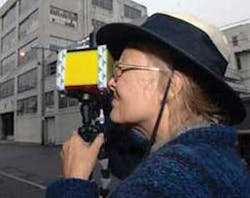
At-home laser is a girl’s ‘new best friend’
Reaping the benefits of laser hair removal has typically meant going to a doctor’s office or spa for a series of treatments. Now, getting those benefits can mean a quick swing by the doctor’s office or spa for a do-it-yourself system. Home Skinovations’ (Toronto, Ontario) Silk’n is one of a new crop of laser hair-removal devices for the home; Tria by Tria Beauty (Pleasanton, CA; formerly SpectraGenics) is another. The units are priced at less than $1000–$995 for Tria and $800 for Silk’n.
CBS News recently profiled Erin Elmore, a 30-year-old Philadelphia lawyer, who tested the Tria, and now calls the device her new best friend. “You get the same professional results but you can do that at 10 o’clock at night while you’re watching television or on the weekends,” she said.
The units work by generating quick bursts of light that’s absorbed by the melanin pigment in hair, making it fall out. Darker hair gets better results–and the devices should not be used by people with dark skin.
For safety, Tria says that sensors control the length of time and the amount of heat released; Silk’n can generate a pulse only when the applicator tip is placed firmly on the treatment area.
Home Skinovations says the treatments can take as little as 5 minutes for an underarm or 30 minutes for a leg. They are intended to be spaced every two weeks for the first few sessions and then as needed.
Optimized produce processing
You know how it usually takes a day or more for the bruise to develop on your shin once you’ve banged it against your bed frame? Well, the same goes for peaches, apricots, and apples–the bruises don’t appear immediately. But while your friends and family will still love you once your bruises appear, grocery shoppers are not so forgiving of blemishes on fruit.
Such decision-making isn’t completely superficial: bruised fruit is apt to decay more quickly. Caught in time, damaged produce can be diverted for use by juice and yogurt makers, but the best method of early detection has been hyperspectral imaging, which is prohibitively expensive.
Now researchers at the Fraunhofer Institute for Photonic Microsystems (IPMS, Dresden, Germany) have developed a more affordable version of the spectral imager. It works in the expected way: broadband infrared light is shone on the sample, and the reflected light is captured by a microscanner mirror with a superimposed diffraction grating, which splits the light into its constituent wavelengths.
But instead of being fixed in place, IPMS’s microscanner mirror is movable, and thus can deflect light of different wavelengths in different directions. “This enables us to make do with a linear detector, which costs only about one-tenth of the conventional type,” says Michael Scholles, IPMS business unit manager. “Since the detector is the most expensive component of the imager, this makes a big difference to the price of the instrument.”
You can lead a horse to laser surgery…
The Large Animal Hospital at the University of Wisconsin School of Veterinary Medicine (Madison, WI) has recently acquired both CO2 and diode-laser surgery instrumentation. The equipment will enable the facility to offer new options for treatment of equine disorders involving the upper respiratory (roarers, dorsal displacement of the soft palate), urogenital (uterine cysts), and musculoskeletal (joint fusion) systems, as well as the skin (tumor removal, or wounds that don’t want to close).
The Wisconsin Ag Connection, part of a nationwide agricultural news network, quotes veterinary surgeon Dr. Sabrina Brounts as saying that because laser surgery does not always require general anesthesia, “a procedure can be performed standing, which is less risk for a horse because recovery time is quicker.” She adds that sometimes, procedures can even be done on an outpatient basis–saving money for the horse owner.
About the Author

Barbara Gefvert
Editor-in-Chief, BioOptics World (2008-2020)
Barbara G. Gefvert has been a science and technology editor and writer since 1987, and served as editor in chief on multiple publications, including Sensors magazine for nearly a decade.